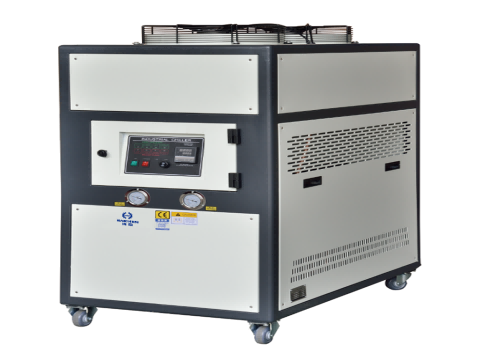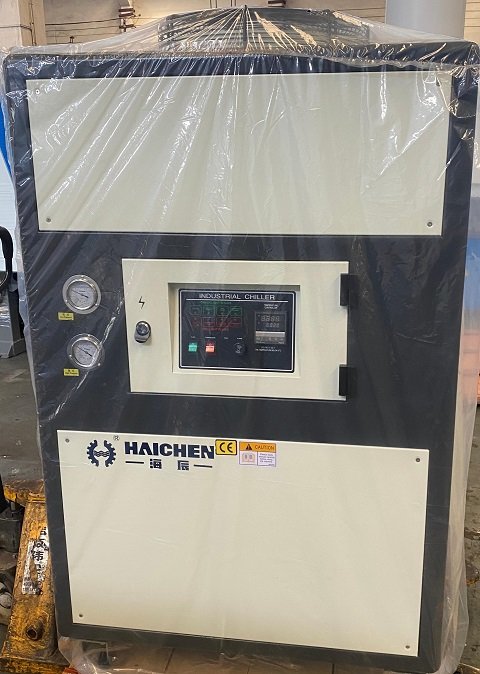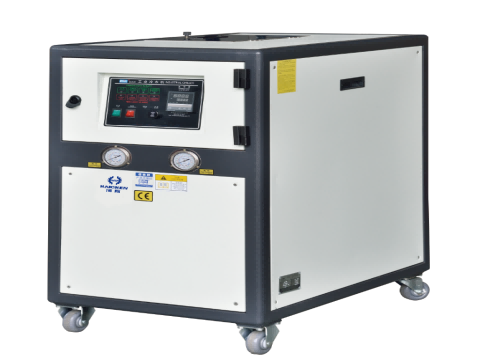The working principle of chiller is to circulate the coolant through the mold to absorb heat, then cool it in the evaporator of the chiller and then circulate it.
Like other manufacturing processes, die casting requires strict temperature regulation during the entire process of production to maintain quality.
Die Casting machines relies on chillers to ensure proper cooling of molten metals, allowing them to solidify. Comprehending the workings of a chiller assists in perfecting die casting techniques.
This article discusses the importance of chillers in die casting machines and the significance in the total process.
The Role of Temperature Control
A die casting machine requires accurate control of temperature as it impacts the final product’s quality. The temperature of the mold needs to remain constant for proper metal injection and freezing. An overly hot mold could lead to metal sticking, while a cold one could lead to incomplete filling. A chiller allows for the ideal temperature to be maintained by extracting heat out of the mold ensuring that the excess is removed.

How a Chiller Works
A chiller works on the refrigeration principle. It has a refrigerant that absorbs heat from the mold and conveys it to a heat exchanger. The heat exchanger removes the heat to the environment through a cooling tower or fans. This continuous cycle of heat absorption and dissipation keeps the mold at a stable temperature, ensuring consistent casting quality.
Components of a Chiller System
A standard chiller system is made up of:
- Compressor – This part of the system compresses the refrigerant which in turn increases both its temperature and pressure.
- Condenser – The hot and high-pressure refrigerant gas is cooled and condenses into a liquid here.
- Expansion valve – The refrigerant is now in liquid form and passes through this valve. After which, the valves pressure and temperature will decrease turning it into a cold, low-pressure liquid.
- Evaporator – The cold refrigerant now has to absorb heat and cool from the mold, but to do this the refrigerant must turn back into a gas.
- Circulating pump – This pump is responsible to move the coolant which is usually water or some other liquid through the mold. As it moves through the mold it has to absorb heat and then be cooled down by the evaporator.

Working principle of chiller
The main job of a water chiller is to quickly and efficiently cool the die casting mold. This is how a water chiller functions.
The coolant that is heated, returns back to the chiller, circulating through the system.
- Chillers frequently circulate coolant through the die casting mold. This coolant is usually water or some other special liquid.
- The coolant takes away heat as it moves between the channels in the mold, helping to cool the molten metal in it faster.
- Refrigeration Cycle: The thermal exchange takes place in the chiller where the coolant relinquishes heat to the refrigerant, which evaporates, absorbing the coolant’s heat and subsequently cooling it.
- Compressor and Condenser: The absorbed heat in the refrigerant gas is then compressed by the compressor, increasing its temperature and pressure. The high-temperature, high-pressure refrigerant gas moves to the condenser where it cools and condenses to a liquid state.
- Expansion and Recirculation: They pass the liquid refrigerant through an expansion valve which lowers both pressure and temperature, transforming it into a low-pressure cold liquid. The evaporator is where this cold refrigerant goes to repeat the cycle.
- Efficient Cooling: The temperature-critical fluid circulation in the mold is crucial for maintaining quality and consistency during casting, which reintroduces the need for the coolant to be re-pumped into the mold.

Die Casting Machine Manufacturer with Integrated Chiller Solutions
HAICHEN is one of the leading manufacturers of die casting machines and chillers with advanced systems.
Haichen chillers excel in maintaining precise temperature control with state-of-the-art technology. Improved part quality and shortened cycle time are achieve through consistent cooling.
We strive to improve the die casting cycle with our chiller systems for maximum efficiency and effectiveness.

Chillers enhance the die casting process by minimizing cycle times while improving surface finish and metallurgical quality.
Uniform solidification of the metal is achieve through rapid cooling of the mold which increases productivity.
Manufacturers are able to maintain a competitive market edge by understanding the Working principle of chiller, properly maintaining it, and ensuring high-quality production.



